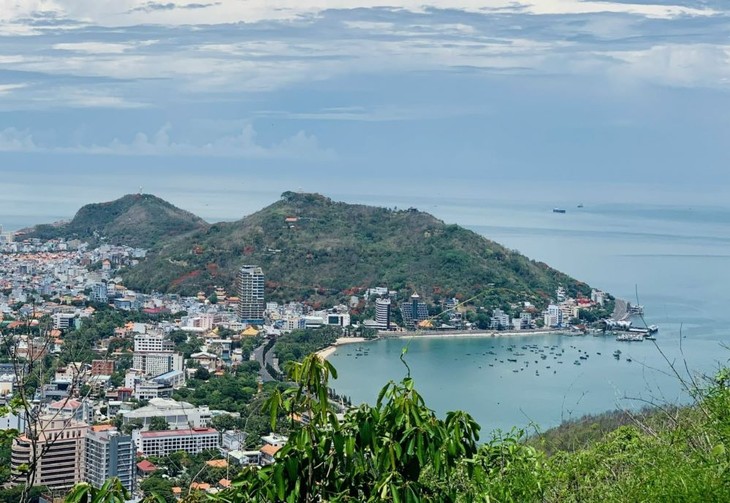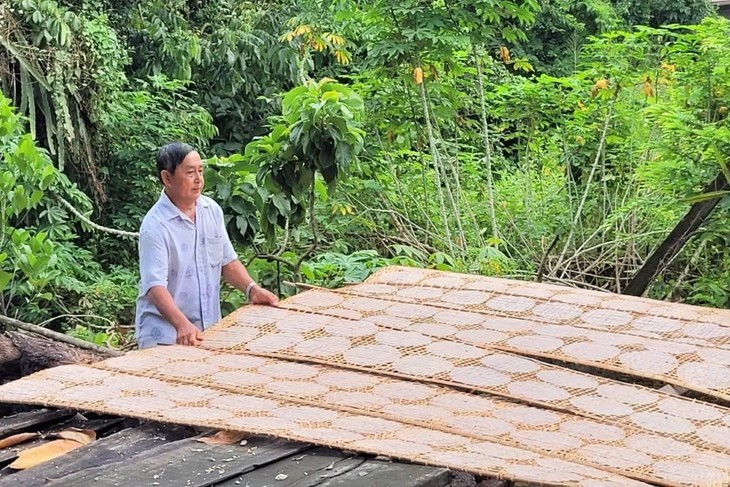(VOVWORLD) -Ba Ria-Vung Tau has all the elements required to turn tourism into a spearhead economic sector. It has been implementing breakthrough solutions to become a leading tourist destination in the region.
 A corner of Vung Tau city (Photo: VNA) A corner of Vung Tau city (Photo: VNA) |
Blessed by nature, Ba Ria-Vung Tau has stunning beaches with clear sky-blue water and stretches of golden sand. Con Dao Island, a highlight of Ba Ria-Vung Tau, still retains a natural, pristine beauty, while Xuyen Moc district is well-known for the Binh Chau-Phuoc Buu nature reserve and the Binh Chau hot spring.
Ba Ria-Vung Tau also has historical relics like the Long Phuoc and Kim Long tunnels, the Bau Sen resistance base, Loc An wharf and the Ho Chi Minh sea trail, Hang Duong cemetery, and Con Dao prison.
The locality has several traditional festivals, including the Nghinh Ong and the Trung Cuu festival.
Trinh Hang, Director of the provincial Department of Tourism, said that Ba Ria-Vung Tau has a very special geography for tourism development.
“In addition to a coastline of more than 300km, we have mountains, forests, and Con Dao National Park, one of the first mangrove Ramsar sites recognized by the world. We have many festivals and many craft villages,” said Hang.
These advantages have made Ba Ria-Vung Tau an important tourist destination since its establishment in 1991. The province now has 77 lodging facilities offering 4,245 standard rooms, as well as 700 private hotels, motels, and boarding houses with 4,000 rooms.
Investment in the tourism industry is steadily increasing. Ba Ria-Vung Tau has 130 tourism projects, 16 of them are foreign invested.
The province attracts 15-16 million tourists each year. Total revenue from the tourism industry reached over 205 million USD per year, an increase of dozens of times compared to the early days of the province's establishment.
The Resolution of Ba Ria-Vung Tau’s 7th Party Congress for the 2020-2025 term identified tourism as a primary economic pillar which should be developed effectively.
By 2030, it hopes to become a high-end resort center and a leading entertainment destination, and rank in ASEAN’s top 10 beach tourism destinations.
By 2045, it hopes to be a popular tourist destination on the regional and global map, with a chain of coastal tourism centers offering diverse tourism products.
To that end, Ba Ria-Vung Tau has built a tourism space covering Vung Tau city and surrounding areas, the Long Hai-Phuoc Hai tourism area, the Dinh Mountain-Thi Vai tourist cluster, the Binh Chau-Ho Tram tourist cluster, and Con Dao tourism.
Le Thi Trang Dai, Chairwoman of the Xuyen Moc district People's Committee, said that under the development strategy, Xuyen Moc's coastal area will become a tourism center with diverse types of tourism that will turn the Ho Tram-Binh Chau area into a high-end tourist destination.
 Rice vermicelli cake making in An Ngai commune, Long Dien district (Photo: laodong.vn) Rice vermicelli cake making in An Ngai commune, Long Dien district (Photo: laodong.vn) |
In addition to developing high-end tourism along the coast, Xuyen Moc district will review the planning of areas with a potential for community tourism in Binh Chau, Hoa Binh, and Phuoc Thuan commune, according to Trang Dai.
She said the Xuyen Moc administration will create a legal corridor for areas with beautiful landscapes.
“But each commune must review its potential to combine tourism and agriculture to develop a strong tourism market. Communes must do planning first so that we can include them in district planning. Facilitating conditions for households and small and medium-sized enterprises to combine agricultural production and tourism will set up a good legal framework,” said Trang Dai.
Ba Ria-Vung Tau's tourism development strategy puts people and community interests at the center. Under the plan, Ba Ria and Vung Tau cities will combine the development of community tourism and river tourism services, eco-tourism destinations and interaction between visitors and local people’s daily life and production activities.
Phu My town combines community tourism and high-tech agriculture, while Long Dien district links its community tourism with traditional crafts, such as rice paper and salt making in An Ngai commune and rice vermicelli cake making in An Nhut commune.
Con Dao district focuses its community tourism on culture, music, cuisine, wild grape products, and Con Dao ginseng and fishing.
Dat Do district combines community tourism with high-tech agriculture and traditional culture.
According to Director of the provincial Department of Tourism Trinh Hang, while building development strategies, the tourism industry has clarified that the core product is resort tourism and entertainment. There are three types of support tourism: ecotourism, health care, and community tourism.
“The identification helps us determine the right products to serve the right markets and which products support Ba Ria-Vung Tau’s tourism development,” said Hang.
With a master plan for the tourism industry closely linked with the economic development strategy of the Southeast region, Ba Ria-Vung Tau is expected to soon become the center of southern tourism and a leading resort tourist destination in Asia.